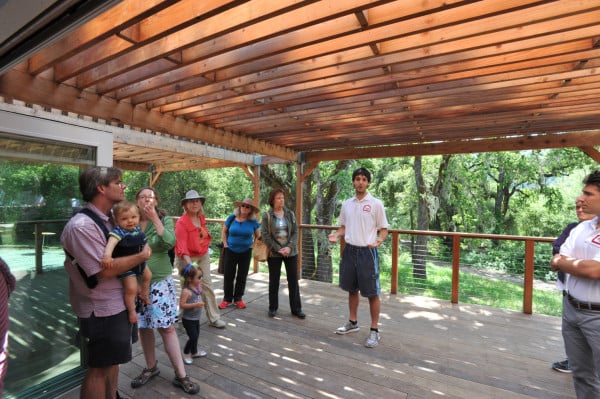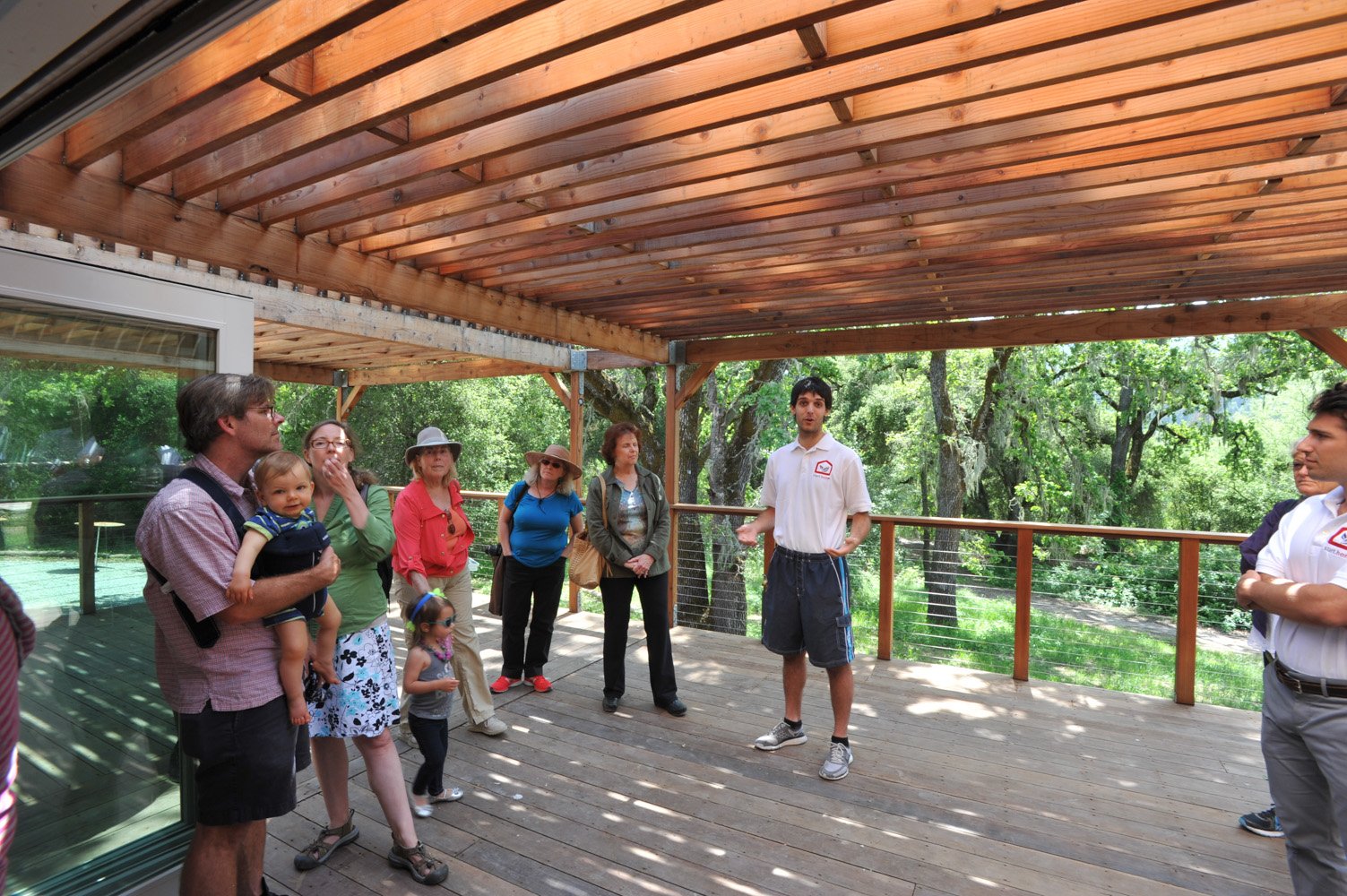
Start.Home, Stanford Solar Decathlon’s most recent project, recently received county approval to serve as a residence for the Jasper Ridge Biological Preserve park ranger and his family.
Start.Home is the team’s student-designed and student-built entry into the 2013 U.S. Department of Energy Solar Decathlon. The home, which is now located at Jasper Ridge, features net-zero energy use and sustainable materials.
Start.Home at Jasper Ridge
In the early stages of planning, the team devised post-competition plans for the home, which took first place in Affordability and third place in Market Appeal.
“Stanford doesn’t exactly have a lot of extra real estate that you could just have a house on,” said Communications Lead Lilly Shi ‘14 M.S. ‘16.
When Jasper Ridge Biological Preserve director Philippe Cohen revealed that his staff had been meaning to build a home for the preserve ranger and his family, “everything came together,” Shi said.
Engineering Advisor Richard Wang Ph.D. ‘15, who has worked with the Solar Decathlon team at the California Institute of Technology, explained that it is uncommon for Decathlon homes to go into functional use post-competition.
“A few of [the Decathlon homes] go to families, but a lot of them become show houses or are torn down after the competition,” Wang said.
The road to Solar Decathlon
The road from designing the home to gaining approval to turning the home into a residence has been a long one.
Though the Department of Energy launched Solar Decathlon in 2002, Start.Home marked the University’s first foray into the competition, which takes place once every two years. Professor Banny Banerjee served as the faculty advisor for the 2013 project.
Wang estimated that the project took over 10,000 man-hours and $1 million in University funding and corporate sponsorships to complete.
The Start.Home team, which consisted of students in fields ranging from product design to mechanical engineering, launched preparations for the design of the home in the fall of 2011. Physical construction of the home commenced in March 2013, following one and a half years of planning.
Students on the team were expected to contribute not only knowledge they had developed through their respective fields of study, but also partake in the physical construction of the home — albeit with the help of a professional carpenters union and Stanford Land, Buildings and Real Estate.
“Most of it — including putting in the plumbing systems, electrical systems and things like that — was done by the students,” Wang said. “Sometimes you can find guides or tutorials online … but a lot of it is learning from scratch.”
“A lot of the students had never used a hammer before,” Shi noted. “It was really stressful because it was more responsibility than I think any of us had ever had.”
But after months of construction, Shi said the moment of the home’s unveiling was worth it.
“It was incredible to see the roof lift up off the house the way you had designed it,” she said. “All of a sudden, the pictures from your computer are real life, and there’s this sense of, ‘Oh my God, I did that.’”
The future of Stanford Solar Decathlon
As preparations to turn Start.Home into a residence are underway, the Stanford Solar Decathlon team is already gearing up for the 2015 competition.
Students interested in building the University’s next entry have signed up for a two-course series — one offered this past spring and one offered this summer — devoted to developing project management, design and competitive testing skills.
Shi, reflecting on her Decathlon experience, called Start.Home a rare opportunity to partake in “a real-world, real-scale project.”
“A lot of what we do in classes is theoretical, but the Decathlon project is an opportunity to apply what you learn in class,” Shi said. “We grow up and we’re told to do things without always being told why … But with this project, you’re not expected to build some sort of scale model. You’re expected to build something that a family can live in. You have responsibility, more than I think any of us had ever had before, but that’s also the reason why it was really rewarding.”
Contact Madeleine Han at mhan95 ‘at’ stanford ‘dot’ edu.
